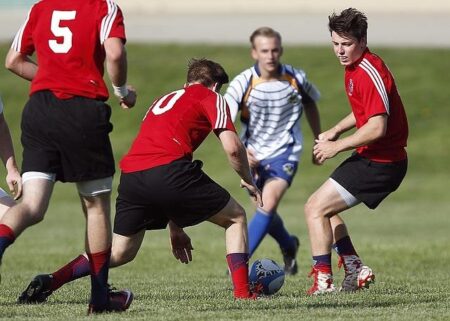The Athlete Representatives Association (ARA) has recently detailed the structure of its membership fees, shedding light on how costs are calculated and allocated among sports agents. In a move aimed at increasing transparency and addressing concerns from industry professionals, the ARA’s explanation offers insight into the financial commitments required for agents seeking to join the organization. This development comes amid growing scrutiny of agent operations and promises to clarify the value proposition behind ARA membership.
Athlete Representatives Association Clarifies Purpose Behind Membership Fees
The Athlete Representatives Association has provided a detailed explanation regarding the allocation of funds collected through membership fees. According to the association, these fees are primarily invested in enhancing support services tailored to the unique needs of athlete representatives. This includes continuous professional development, legal guidance, and access to exclusive networking events that connect agents with key industry decision-makers. The association emphasized that transparency remains a cornerstone of their financial approach, ensuring members receive tangible benefits that justify their contributions.
To clarify the breakdown of membership fee utilization, the association presented the following key areas of investment:
- Educational Workshops: Regular training sessions and certification programs
- Legal Support: Access to specialized legal counsel for contract negotiations and disputes
- Advocacy Efforts: Lobbying for athlete rights and fair representation
- Community Building: Annual conferences and peer-mentorship networks
| Fee Category | Percentage Allocation | Purpose |
|---|---|---|
| Professional Development | 35% | Workshops, seminars, certifications |
| Legal Assistance | 25% | Contract reviews, dispute resolution |
| Advocacy & Lobbying | 20% | Policy influence, athlete rights initiatives |
| Community Events | 15% | Conferences, networking opportunities |
| Administrative Costs | 5% | Operational expenses, member services |
Breaking Down the Cost Components of Membership Dues
At the heart of the membership dues lies a carefully structured allocation designed to sustain and enhance the services provided to all Athlete Representatives. Core administrative costs cover essential operations such as personnel salaries, technology platforms, and compliance management. These foundational expenses ensure that the association runs smoothly, offering seamless communication channels and up-to-date regulatory guidance.
Beyond administration, a significant portion of the fees supports educational initiatives where members gain access to workshops, seminars, and certifications vital for maintaining industry standards and sharpening negotiation skills.
Additional contributions fund advocacy efforts and community-building projects, aiming to amplify members’ voices within the sports agent landscape. Here is a breakdown of the key components:
- Administration: 40%
- Education & Training: 30%
- Advocacy & Representation: 15%
- Networking Events: 10%
- Contingency Fund: 5%
| Cost Component | Estimated Annual Cost | Percentage of Dues |
|---|---|---|
| Operations & Admin | $450,000 | 40% |
| Member Education Programs | $337,500 | 30% |
| Advocacy & Lobbying | $168,750 | 15% |
| Networking & Events | $112,500 | 10% |
| Reserve Fund | $56,250 | 5% |
How Membership Fees Support Athlete Advocacy and Resources
Members’ contributions play a vital role in empowering athlete advocates who champion fair treatment and equitable opportunities across all sports. Fees collected are meticulously allocated to create educational programs, legal support, and lobbying efforts that ensure athletes’ voices are heard at every decision-making table. This collective funding strengthens the association’s ability to confront challenges such as contract disputes, health and wellness policies, and career transition assistance.
Key areas funded by membership fees include:
- Professional development workshops and seminars
- Access to legal counsel specializing in sports law
- Advocacy campaigns influencing sports governance reforms
- Wellness initiatives focused on mental and physical health
- Networking events connecting athletes with resources
| Expense Category | Percentage of Budget |
|---|---|
| Advocacy & Lobbying | 35% |
| Legal Support | 25% |
| Athlete Programs | 20% |
| Administrative Costs | 20% |
Expert Recommendations for Prospective Members to Maximize Value
Maximizing your investment starts with a clear understanding of the association’s tiered membership benefits. Prospective members should prioritize engaging with the exclusive networking opportunities that directly connect them to industry leaders and seasoned professionals. These interactions can lead to invaluable contracts and partnership deals. Additionally, allocating time to attend quarterly workshops and webinars included in the fee structure can fortify your agency’s negotiation skills and compliance knowledge, ensuring sustained growth.
Experts also emphasize the importance of leveraging digital resources provided by the association. Access to proprietary market analysis reports and legal templates can streamline daily operations and reduce external costs. Members are encouraged to take advantage of the mentorship program, pairing novices with veterans to accelerate professional development. Below is a simple guideline outlining key strategies to maximize membership value:
| Strategy | Action | Expected Benefit |
|---|---|---|
| Networking | Attend monthly mixers and forums | Expanded client base and industry contacts |
| Education | Participate in workshops/webinars | Enhanced negotiation and compliance skills |
| Digital Resources | Utilize member-exclusive tools | Operational efficiency and cost savings |
| Mentorship | Engage in mentorship programs | Accelerated career growth and guidance |
In Retrospect
In summary, the Athlete Representatives Association’s detailed explanation of its membership fee structure sheds light on the costs and benefits involved in joining the organization. By providing greater transparency, the association aims to ensure that current and prospective members fully understand the value proposition and the resources available to support their careers. As the landscape of sports representation continues to evolve, clear communication about fees and services remains essential for maintaining trust and fostering a strong professional community within the industry.





